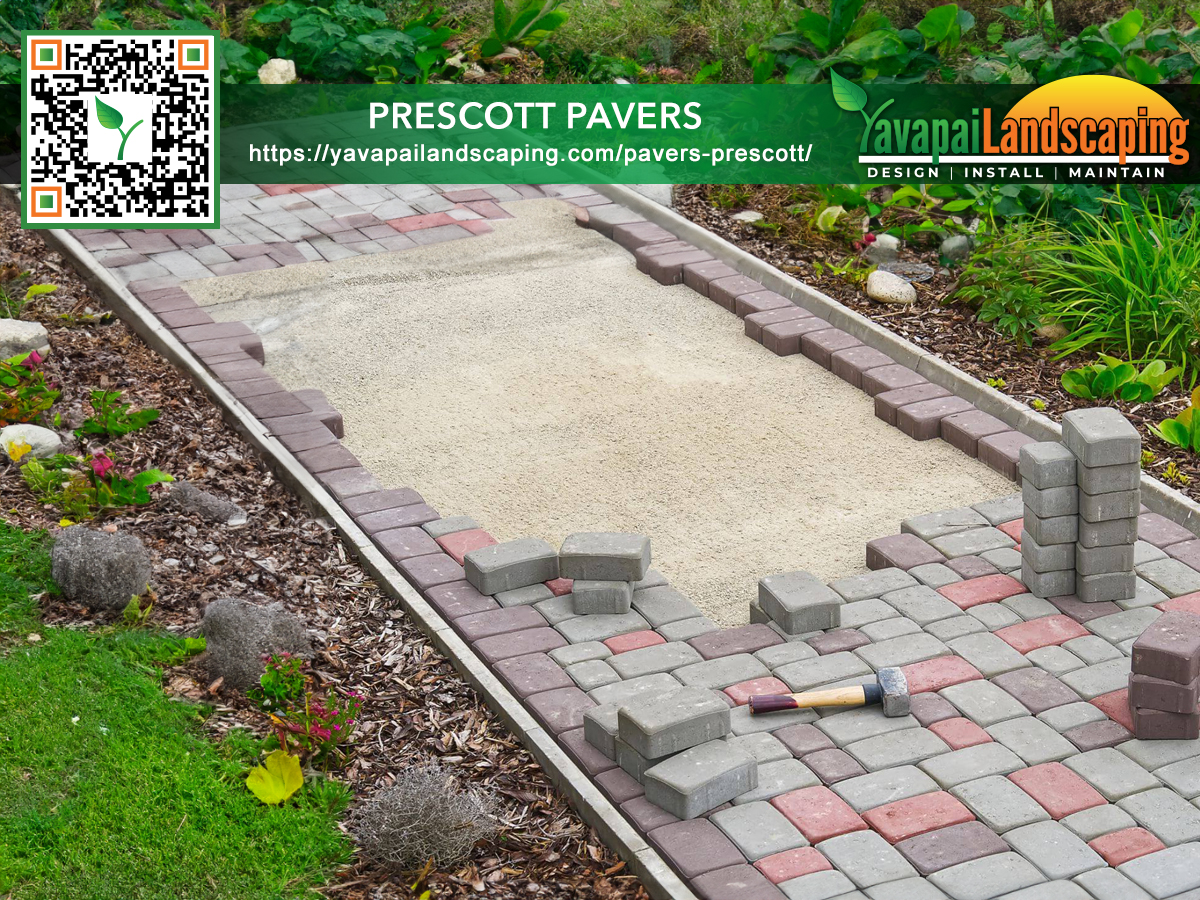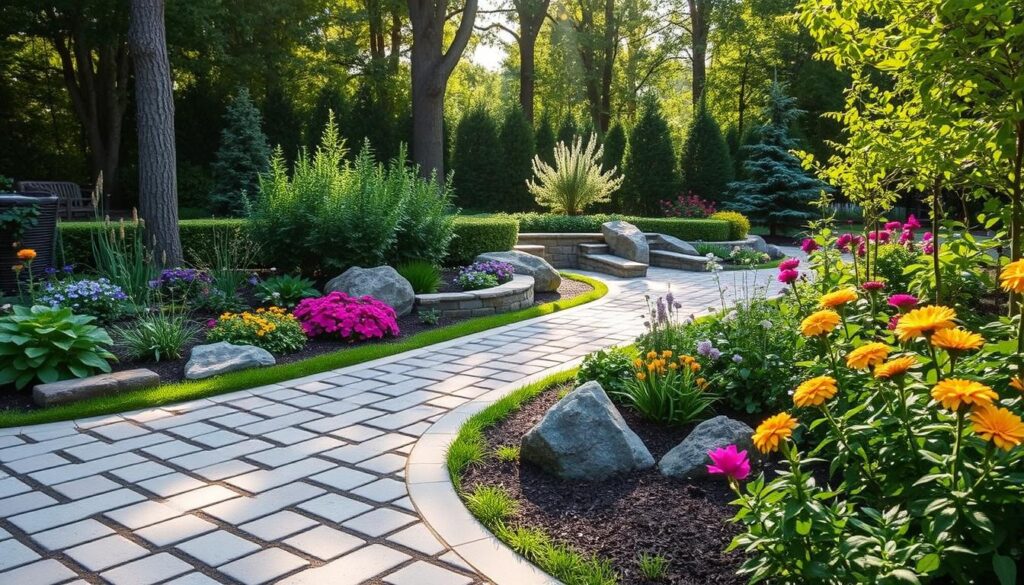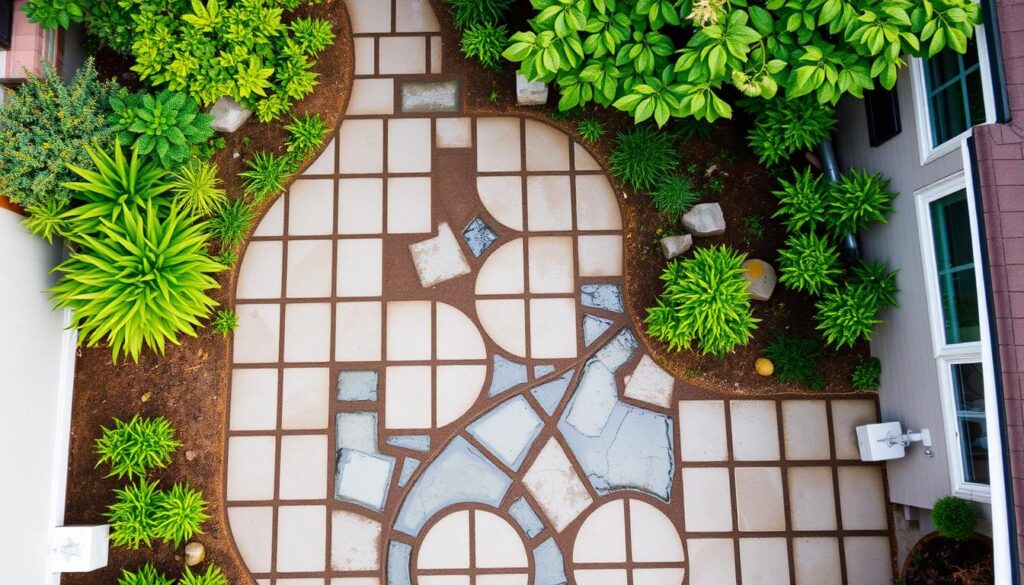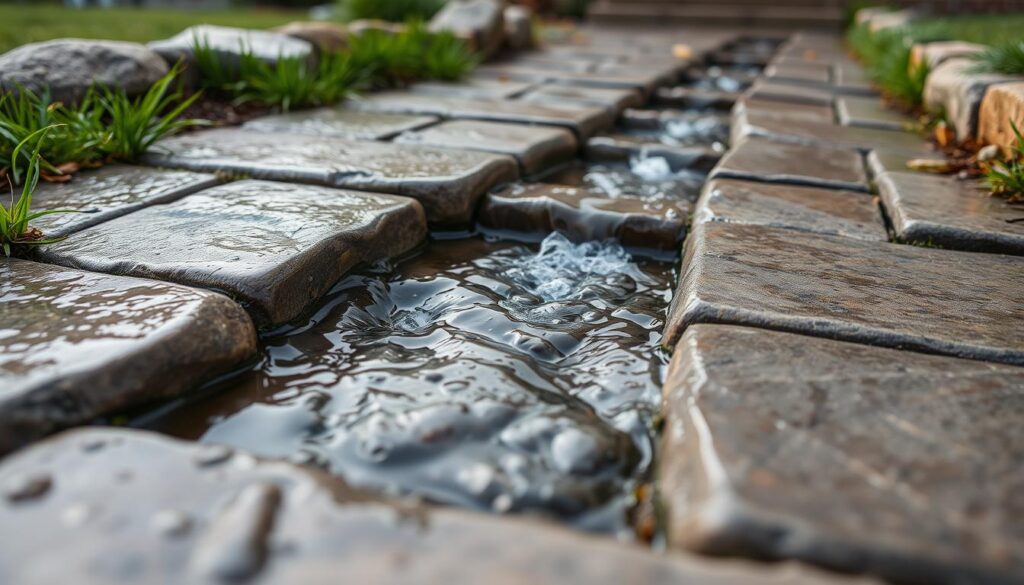
Homeowners are choosing permeable paving for smart backyard drainage. This eco-friendly option is becoming popular in sustainable landscaping. It manages stormwater while making outdoor spaces look good.
Unlike regular pavement, these pavers let water pass through. This cuts down on runoff and helps water filter naturally. It’s a great choice for those who care about the environment.
We’ll look into how permeable pavers work in backyards. They’re used for patios and driveways, changing how we see outdoor surfaces and water use.
Key Takeaways
- Permeable pavers offer effective stormwater management in backyards
- They contribute to sustainable landscaping practices
- These pavers reduce runoff and promote natural water filtration
- Permeable paving is versatile for various backyard applications
- They combine functionality with attractive outdoor design
Understanding Permeable Pavers: An Introduction
Permeable pavers are a big step forward in making outdoor spaces more eco-friendly. They let water flow through them, just like nature does. This is different from regular surfaces that don’t let water pass through.
These pavers help water soak into the ground. This reduces the amount of water that runs off and helps recharge groundwater. It’s a win-win for both the environment and our water resources.

Many types of permeable pavers exist, like interlocking concrete blocks and pervious concrete. Each has its own advantages, but all share the key feature of letting water through. This is especially useful in homes where water can easily collect and cause problems.
Permeable pavers are made up of:
- A surface layer of porous material
- A base layer of crushed stone or gravel
- A subgrade that allows water to percolate into the soil
This setup lets water soak into the ground and cleans it as it goes. Using permeable pavers, homeowners can help manage water better and make their yards look great. Make sure to read this outstanding article.
The Environmental Benefits of Permeable Pavers
Permeable pavers are great for the environment. They help in making cities more sustainable. These materials are key in managing stormwater and reducing water pollution.

Reducing Stormwater Runoff
Permeable pavers are good at handling stormwater runoff. They let the water soak through, which reduces flood risks. This also helps keep groundwater levels up and supports the local water cycle.
Improving Water Quality
These pavers act as natural filters. They catch pollutants and sediments as water flows through. This makes the water cleaner before it reaches our water bodies.
Mitigating the Urban Heat Island Effect
Permeable pavers help cool cities. They absorb less heat than other materials. This makes cities cooler, which is good for comfort and saves energy costs.
Using permeable pavers in backyards helps the environment. They save water, improve local ecosystems, and support sustainable living in cities.
Permeable Pavers Backyard Drainage: How the System Works
Permeable pavers are a smart choice for backyard drainage. They have special gaps that let rainwater seep through.

Underneath the pavers, there are carefully designed layers. These layers help manage water and filter it naturally. The top layer is made of small stones or sand, spreading water evenly.
The aggregate base is a key part of the system. It’s made of crushed stone in different sizes. It does two main things:
- Stores water temporarily
- Allows water to soak into the soil below slowly
The soil beneath is also important. Sandy or loamy soils drain well, making the system work better. But, if your soil is mostly clay, you might need extra help with drainage.
As water goes through these layers, it gets filtered naturally. Pollutants stay in the top layers, while clean water returns to the ground. This reduces surface runoff and keeps your backyard’s water cycle healthy.
Types of Permeable Pavers for Backyard Applications
Permeable paving materials are great for your backyard. They are eco-friendly and come in different types. Each has its own benefits. Let’s look at the most popular ones for backyards.
Interlocking Concrete Pavers
Interlocking concrete pavers are great for patios and walkways. They come in many shapes and sizes. This lets you get creative with your design.
The gaps between pavers help water drain. This makes them a good choice for drainage.
Porous Asphalt
Porous asphalt is made of stone and asphalt without fine particles. It has tiny voids for water to pass through. It’s perfect for driveways and can handle heavy vehicles.
Pervious Concrete
Porous concrete is like regular concrete but without fine particles. It has voids for water to filter through. It’s strong and good for patios, walkways, and even pool decks.
Plastic Grid Systems
Plastic grid systems are light and easy to install. You can fill them with gravel or grass. They provide a green surface that lets water through. They’re great for low-traffic areas.
When picking permeable paving for your backyard, think about looks, durability, and upkeep. Each type has its own advantages. They’re perfect for homeowners who care about the environment.
Installing Permeable Pavers: Best Practices for Backyard Projects
Installing permeable pavers in your backyard starts with site preparation. First, check your yard’s slope, soil type, and drainage. This helps plan your paver system’s layout and drainage.
For DIY projects, planning is key. Start by digging to fit the pavers and base layers. Then, add gravel and bedding sand, leveling each layer for even water flow. Place the pavers in your chosen pattern, leaving gaps for water to pass through.
Some projects might need a pro’s touch. Big areas, complex designs, or tough terrain might require special tools and skills. Experts can handle tricky drainage and make sure your system meets local rules.
Don’t forget about upkeep. Regular cleaning and occasional joint re-sanding keep your pavers working well. This keeps your backyard looking good and drains water effectively.
Yavapai Landscaping Prescott offers complimentary estimates for Prescott and its surrounding communities for Landscaping and tree Services. This includes tree removal, trimming, stump grinding, land clearing, storm clean-up, and emergency tree services.
